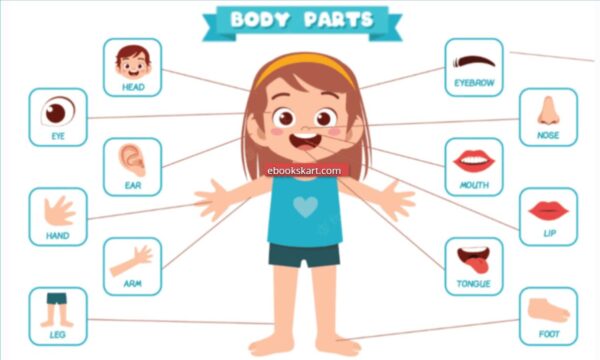This will be the first question your essay helper ask.
In all societies of the world, some kind of social stratification exists based on generalized or a set of characteristics. The stratification is defined by a variety of factors including gender, authority relationships, income, social status, and economic power and privileges among others. In American society, social class is a significant factor in societal stratification phenomenon. According to Kraus, Park, and Tan (2017), social class can be defined as a division in society based on economic constructs and non-economic criteria such as wealth and social and cultural capital. In the American societal context, stratification based on social class is a largely internalized and often thought of based on material and perceptual ascriptions. Before watching the film Fight Club, the concept of a stratified society based on class or material characteristics was clear in relation to its manifestations on individuals and groups in the social space. Groups of people have varying preferences and choices on material life matters and their level or ability of facilitation defines whether they are able to live their lives in a particular way. For example, there are schools and hotels for different classes of people and only it depends on the ability of a defined class of people to access such facilities.
Social class for most purposes has three tiers: the upper, middle, and lower classes. Each class is identified by a set of objective indicators in relation to occupation, education, income, place of residence, material possession, and socio-cultural background (Kraus et al., 2017). These factors tend to produce different forms of socio-psychological environments that relate to the external circumstances and interpersonal and intrapersonal relations that persist and define individuals or groups. Social class identity is perceptual in nature and relates to the way individuals think about themselves, how they see self in comparison with others, and the background of individuals in relation to objective indicators. To define the social class identity of an individual, society uses subtle and conscious ascriptions and observable attributes such as physical appearance, dressing, and material possession. It is because of the ascribed perceptions and attributes to certain groups that society accords values of respect and recognition.
Where did that knowledge come from?
There have been scholarly writings about the culture and subculture of social classes from which knowledge of social class-based identities is built. Sociologists, economists, and historians alike have studied social class systems with reference to quantifiable measures including income, education, and club membership. In the study of social class-based stratification, the focus of researchers has been on patterns of consumption, social power, and social status of individuals or groups. The classification of social class into the upper class, middle class, and lower class is characterized by a set of attributes assigned to each class.
The upper-class culture is defined by group interactions and consciousness of the societal position based on a set of subcultural customs that differentiate it from the other classes. According to Hurst, Fitz-Gibbon, and Nurse (2016), familyism, lineage, traditions, and club membership are significant attributes of the upper class. The middle-class culture is defined by an emphasis on the nuclear family, child upbringing, career, and education including its contributory role in career advancement. In the view of Tischler (2014), the middle-class is concerned about respectability, hence the focus on success in family, style of living, individual initiatives, group functioning, and planning for the future with a focus on practical results. The middle-class manifests in terms of the desire for socio-economic advancement with a strong interest in home ownership and religion while the lower class is defined by a variety of lifestyles that may be seen as emanating from the stresses and deprivations of life. The lower-class identity manifests in a life that revolves around trouble, toughness, fate, and autonomy, which are the attributes of several kinds of survival strategies that lead to immediate gratification.
Two classical sociologists’ theories feature most in the discussions about social class identity. Karl Marx presented the assertion that society is divided into two main classes: the capitalists or owners of the means of production and the labor power or workers who own the ability to work. In Marx’s theoretic assumption, class-based stratification is actualized by the power of the capitalists and workers’ lack of power that informs the role of each class in the society (Wright, 2015). Max Weber also argued that economic interests define social class stratification. Weber’s theoretic assumption depicts different classes as being defined by quantifiable economic positions and sharing a common set of life circumstances and chances (Rosenberg, 2016). An analysis of the two theorists leads to the understanding that the material aspects of culture play a significant role in the identity of people or groups in society.
Post-Assessment
What key insights did you take away from this experience? What did you learn?
Fight Club is a film adaptation from Chuck Palahniuk’s novel, and it is about disenchanted men who use fighting to break through the overall weakness or malaise they experience (Linson, Chaffin, Bell, & Fincher, 1999). The film is thrilling and exciting because it bears subtle depictions and messages that challenge a typical American society and the aspect of social class as an identity factor. The director of the film, David Fincher, presents a story of an unknown narrator who meets Tyler Durden, a salesperson. The two men have a complicated relationship after moving in together and routinely fight as a form of therapy. The men moved to hold the fights in public and, as a result, formed the Fight Club, which functioned based on rules established by Durden.
Fight Club uses drama to create a world where idealized powers that create new social realities are depicted, enacted, and highly personalized. The film narrative is a remarkable resource for observing social ascriptions, cultural scripts, and traditions about American society. Through the self-empowerment of Durden in establishing the Fight Club, the film presents a social value model that explicates self-empowerment and satisfaction or utility as aspects that challenge the materially defined social classes that stratify the American society. Through the rules established by the men themselves and not by some administrative body, the participants were able to impose their own restrictions through which they cultivate their power and fulfillment. For example, one of the rules established that “Fights will go on as long as they have to” (Linson et al., 1999). The autonomy element enables men to establish an environment in which their physicality is power and not their social class. Ultimately, the film serves as a means for men like Durden to be empowered. The characters experience selfhood by resisting against arbitrary systems that dominate the choice and decisions of people in a particular class. In the film, the experience of the men as fighters and as being responsible for setting the rules reinstates freedom as an aspect of individual desire rather than boundaries and limits set in the collective communal process. The film is able to remove the choice of individuals as a commodity or an aspect of public demand as defined in the collectively defined perceptions ascribed to a particular group. In the film, the body of the fighters is no longer the privilege or commodity of the social citizenship space or a political agency. Fight Club resurrects the reality of freedom tied to a world defined not by cynicism and survival for the fittest but rather hope. Social class theories focus more on material possessions as significant constructs of class identity and blur the inner satisfaction as an element of personal choice and freedom as depicted in Fight Club.
How does your knowledge about this particular American identity compare with current media representations?
My personal perception of the movie was that despite having plenty of action and depictions of violence, it had a philosophical orientation that illuminates man’s true freedom in a world free of political agents and definitive perceptions. The film presents significant insights into aspects of life, purpose, and societal dynamics. Fight Club invokes a perception of a film that presented anarchism in a leaner manner on the context of being anti-capitalist and anti-corporate to restore its social aims of popular awareness. A deeper look into the philosophical dimension of the film reveals the trend that contrasts stratified social classes as aimed at silencing mainstream media anarchism. The Fight Club appears to give new order and meaning to the lives of the men who crave self-regulation, self-set rules, and clearly defined boundaries.
The media representations of social class have programmed the minds and perceptions of people to equate satisfaction with material elements; contemporary media glorifies material possession and lifestyles of the social classes. Media representations of social class identity frequently invoke representations of inequalities between social classes. According to Lemke andSchniedermann (2016), media representations of class inequality highlight the problems of the lower class and the poor, emphasize the values of the middle-class, and celebrate the material possessions and lifestyles of the upper class regardless of the source of the possessions. While portraying the middle and upper class as happy and desirable and the lower class as suffering or less deserving, the media defines social value based on a narrow concept that has developed into a culture upon which people evaluate selves and others. Throughout Fight Club, the film undermines the social order and identities perceived in the media that focus on defined boundaries to enact a world where men feel their material successes are empty and defined by the satisfaction of self.










